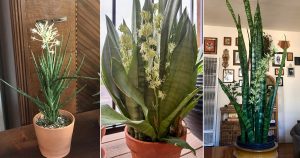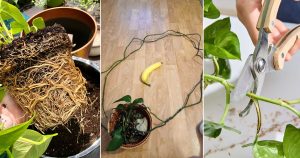It’s that time of year when the pests are out in full force in the garden. Not only are a lot of bad bugs gross looking (aphids…blech!) they’re obviously not good for your plants. You don’t have to use harsh chemicals to control pests. If you’re looking for organic and natural pest control methods, you’re in luck!
Here are some solutions I’ve found that don’t require spraying your plants with harmful chemicals (not exactly an appetizing thought if you’re growing edibles!):
- Neem Oil
: An oldie but goodie. Neem oil works by discouraging insects from eating, not by directly killing them, and it is totally safe to use on edibles. Mix 1 tsp per quart of water plus 1/4 tsp of liquid dish soap. Spray the neem oil mixture directly on leaves or water it in. If you are spraying it on, do so liberally on both the top and undersides of leaves. Reapply the neem oil mixture every 2-4 weeks as needed.
- Espoma Earth-Tone
: Espoma is a company that only makes organic and natural gardening products. Their pest control spray is called Earth-Tone
and can be purchased at garden centers and even some drug stores. It’s good for aphids, beetles, caterpillars, ants, mealybugs, mites, leafhoppers, scale, thrips, fungus gnats, whitefly, adelgids, plant bugs, sawfly larvae, psyllids, spittlebugs, and phylloxera. Best of all, it’s safe to use on fruits and vegetables.
- Ladybugs: These guys are amazing. They love chowing down on aphids and scale insects and they look pretty while doing it. Some ladybugs can eat more than 5,000 aphids in their lifetime! You can purchase little containers of live ladybugs at garden centers and farmers markets. If you can, try to buy them as late in the day as possible. When you get them home, put their container in the fridge to slow them down. At dusk, release a third of the ladybugs into your garden, spreading them around plants infested with insects ladybugs like to eat. Put the remaining ladybugs back in to your fridge. Do the same thing for the next two days. Releasing them in stages, at night, after having been refrigerated will help keep the lady bugs in your garden. After releasing the ladybugs, don’t use pesticides, even organic ones, as you’ll risk killing off your ladybugs in the process.
- DIY Bug Spray: Mary, of Two Green Thumbs Up! recommends blending together 2 garlic bulbs, 1 onion, 1 tbsp. of cayenne pepper and 1 quart of water. After allowing the mixture to steep for one hour, strain and add 1 tbsp. of liquid soap before putting it in a spray bottle and using it as a general bug spray. She has other bug-specific recipes, so be sure to check out the link above.
HTGT is full of great garden ideas, not to mention awesome tips and tricks for container gardeners. Subscribe and never miss a thing. It’s free!







